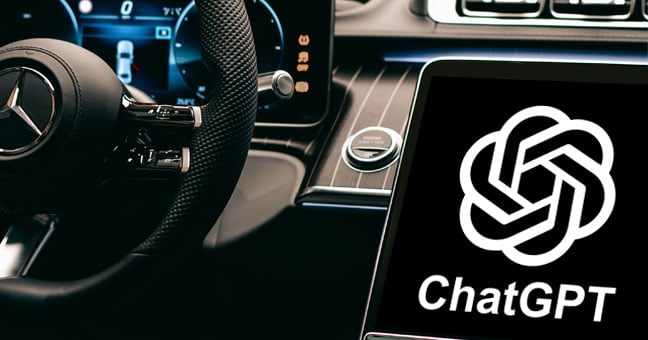

Dec 5 2023
By Jason Doring
DataOne Software’s blog this year has emphasized the impact of increasing vehicle complexity within a wide swath of the automotive industry, and we are not going to be short on topics any time soon. The latest innovation that has captured the investment dollars of the tech sector, “AI” (which in truth is a mislabeling of the technology – it should more appropriately be called a Large Language Model) is now making its way into OEMs’ development plans, and automotive risk assessment professionals will need to closely consider its ramifications to avoid unexpected losses.
Unlike advanced (Level 3+) ADAS, light-duty vehicles with AI will be reaching the consumer market very quickly. Stellantis, through its brand DS Automobiles, is introducing AI into the DS IRIS navigation system embedded in its vehicles. The goal for DS Automobiles is to use the ChatGPT program to provide a richer, voice-prompted experience in DS vehicles, beyond providing simple navigation (such as recommended tourist attractions).
Mercedes-Benz and Microsoft also reached an agreement earlier this year to utilize ChatGPT in its vehicles, in an effort to evolve their on-board voice commands. Per CNN, “the system will be able to remember the context of what is being discussed and engage in back-and-forth dialog with the driver or vehicle occupants [and] respond to a wider range of requests, including ones that might not be related to the car or driver.” General Motors is also exploring a similar agreement with Microsoft and ChatGPT, with the possibility of it being able to access owners’ manual features, garage door codes, or scheduling. GM Vice President Scott Miller stated the company’s intent succinctly: “ChatGPT will be in everything.”
These AI programs will clearly be standard for the immediate future, but given the short history of the program, insurance and warranty providers should be alert to its implications.
The ubiquity of smartphones in the 21st century has resulted in a consistent road hazard – distracted driving. Forbes compiled a wide range of statistics related to phone and distracted driving use, ranging from it causing 3,000 auto fatalities every year to the involvement of phone use in 12% of car accidents.
ChatGPT-infused vehicles are not directly related to phones, but if the plan for the tool is to engage in direct, back-and-forth conversation with the driver, then it may be another distraction that takes focus from the road.
These new AI models, of which ChatGPT is the most well-known, have bugs and failure points that are common with technology innovations. Quintic AI CEO Ali Borji summarizes the eleven failure points inherent in the program, including reasoning, mathematics, and factual errors. As vehicle complexity increases, there is further inherent risk in adopting an unstable tool into its technology stack. This risk is compounded by the fact that one of the plans for ChatGPT is to integrate it into ADAS systems.
What if ChatGPT AI feeds incorrect information to the driver, or manages ADAS improperly? Insurance providers should weigh this possibility heavily within their future policy modeling.
Companies assessing vehicle risk need to be fully aware of the costs associated with vehicle repair, and have full knowledge of the features and options built into the car. Based on early news about ChatGPT’s implementation and operation, the costs associated with it are enormous. It is known that the ChatGPT model costs $700,000 to run daily, and its owner OpenAI is facing severe financial difficulties with Microsoft’s investment keeping them solvent for now. At the micro level, the cost for a single query is approximately 36 cents.
It is reasonable to believe that OpenAI will want to increase licensing fees for the tool to keep the company profitable, which would in turn lead to OEMs increasing prices on components of the vehicle that use the program. These possible price increases would also need to play a key role in policy generation for vehicles that have AI-based options.
As vehicle manufacturers race to innovate with new vehicle technology including AI integration, certainly the insurance industry will need to better understand the implications of these more sophisticated systems. Insurance organizations need to strive for full knowledge of the behavior and material ramifications of these efforts, to make the best possible, profit-retaining analysis on this new technology development.